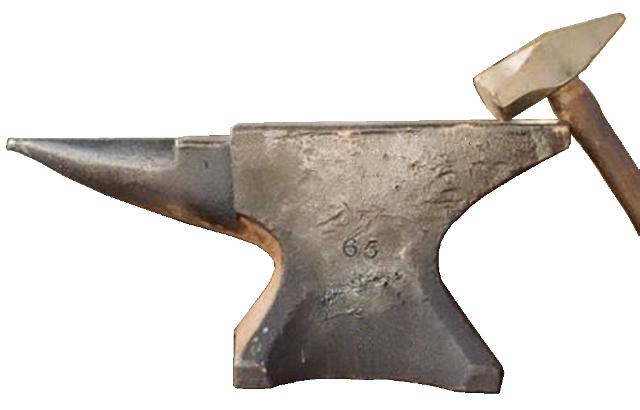Sent to us by Craig Williams of New South Wales, Australia.
This little anvil has beautiful lines and is typical of English "London Pattern" anvils.
It has a feature thought to be indicative of Mousehole anvils, the triangular ridge under the horn where it blends into the body.
However, this seems to be a trait of many English anvils.
This anvil has a base with Germanic influence.
It is a later version than that shown in Anvils in America (p.72)
Another unusual feature is the weight marked in pounds rather than English Hundredweight.
In the U.S. we primarily see the major exporters who's sales territory was North America.
These included Peter Wright, William Foster, Wilkinson, Mousehole Forge and its various proprietors such as M & H Arrmitage and Brooks and Cooper.
However, Richard Postman, author of Anvils in America has identified over 250 British anvil manufacturers.
Many of these exported to places other than the U.S. and many may also make up those many unmarked anvils that are impossible to identify.





This little anvil has beautiful lines and is typical of English "London Pattern" anvils. It has a feature thought to be indicative of Mousehole anvils, the triangular ridge under the horn where it blends into the body. However, this seems to be a trait of many English anvils. This anvil has a base with Germanic influence. It is a later version than that shown in Anvils in America (p.72)
Another unusual feature is the weight marked in pounds rather than English Hundredweight.
In the U.S. we primarily see the major exporters who's sales territory was North America. These included Peter Wright, William Foster, Wilkinson, Mousehole Forge and its various proprietors such as M & H Arrmitage and Brooks and Cooper. However, Richard Postman, author of Anvils in America has identified over 250 British anvil manufacturers. Many of these exported to places other than the U.S. and many may also make up those many unmarked anvils that are impossible to identify.